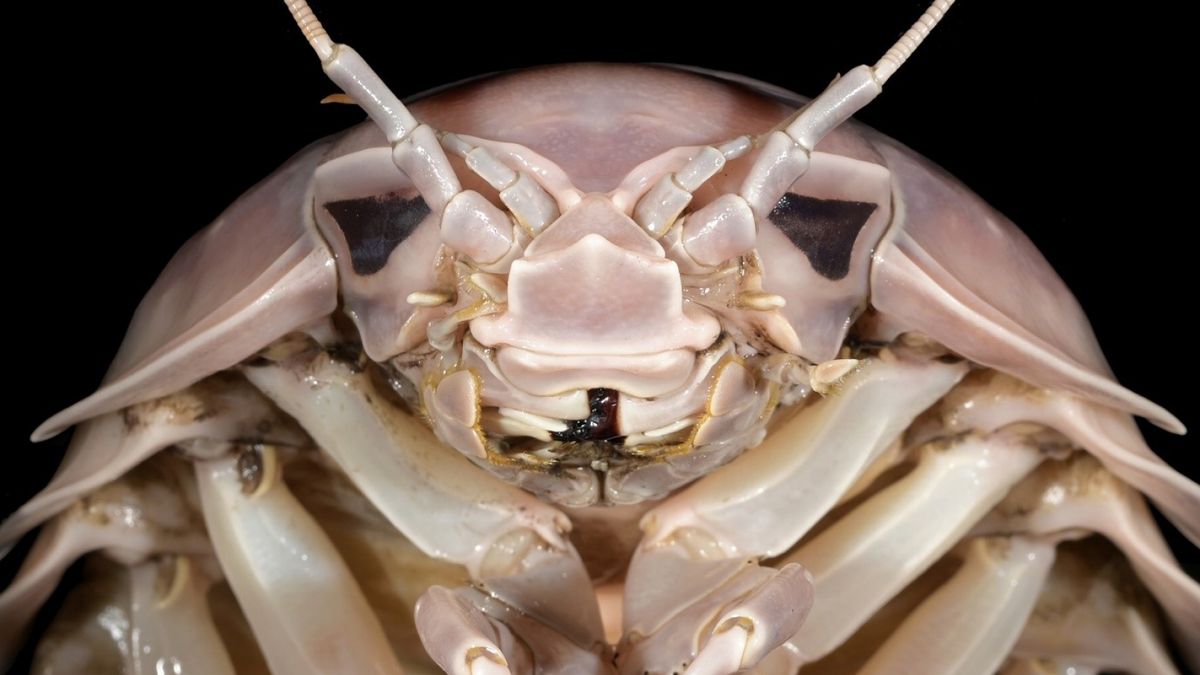Recently, scientists unveiled a remarkable discovery - a new species of giant isopod that immediately caught the eye with its unusual appearance.
This deep-sea creature surprised researchers not only because of its extraordinary size, but also because of its striking resemblance to an iconic science fiction character: Darth Vader from Star Wars.
Due to the shape of its head, which closely resembles the legendary villain's helmet, the species has been officially named Bathynomus vaderi.

An Unexpected Discovery: Found at a Fish Market
Interestingly, this discovery didn’t come from a high-tech laboratory, but rather from a seafood market in Quy Nhơn City, Viet Nam. Researchers from Hanoi University purchased several giant isopod specimens sold by local fishermen.
They then collaborated with scientists from the National University of Singapore to conduct a detailed study of the creature.
The results, published in the journal Zookeys, revealed that one of the specimens exhibited morphological characteristics distinct from any other known supergiant isopods. This indicated that they had uncovered a previously undocumented species.
Massive Size, Extreme Habitat
Bathynomus vaderi belongs to the genus Bathynomus, a group of deep-sea isopods known for their exceptionally large size. This particular specimen measured 32.5 cm in length and weighed over 1 kg—roughly the size of a guinea pig or small rabbit.
In contrast, most isopods are typically only about 2.5 cm long. This makes the new species one of the largest known isopods.

The creature lives at depths exceeding 1,000 meters below the ocean surface, where sunlight never reaches. Such an environment demands specialized adaptations, including a hard, segmented body and large size to survive the extreme conditions.
Darth Vader of the Deep Sea
One of the main reasons behind the name vaderi in Bathynomus vaderi is its distinct head shape. Upon close examination, the creature’s shell features curves and a hardened surface that strongly resemble the helmet worn by Darth Vader in the Star Wars films.
More than just a creative naming choice, it also serves to draw public attention to the importance of conserving and exploring deep-sea biodiversity, a field that has long been underrepresented.
Distinctive Physical Traits
In addition to its massive size, B. vaderi possesses unique anatomical features that set it apart from other supergiant isopod species. One of the most striking differences is the shape of its hind legs, which taper and curve backward—a trait not found in other supergiant isopods.

The research team also noted a distinctive indentation in the pelvic area as well as unique bony protrusions on its body structure. These characteristics were confirmed through comparisons with other specimens from museum collections around the world.
A Threat from Kitchen to Market
Interestingly, Bathynomus—including B. vaderi—has become a popular delicacy in Vietnam since 2017. These creatures are sold live in seafood markets and are considered a luxury dish, often compared to lobster.
Several restaurants across Asia, including in Taiwan, have served them in various forms, such as an exclusive ramen topping priced at up to $65 per serving.
However, this culinary popularity has raised concerns. Giant isopods like B. vaderi reproduce slowly and lay only a small number of eggs, making them highly vulnerable to overfishing.
If market demand continues to rise without sustainable management, this species could face serious population pressure.
Exploring the Still-Mysterious Depths
So far, B. vaderi has only been discovered around the Spratly Islands, a disputed region located in the middle of the South China Sea. However, scientists believe that the species may also inhabit other deep-sea areas that remain largely unexplored.
Due to its extremely deep and hard-to-reach habitat, studying this species requires advanced equipment and international collaboration. Researchers hope that this discovery will encourage further exploration of deep-sea biodiversity in Southeast Asia, especially as natural resource exploitation—such as oil, gas, and marine life—continues to increase.



















